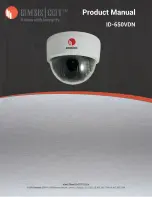
V1.02
Thom Hogan’s Complete Guide to the Nikon D300
Page 703
function
On
(SHOOTING menu). This captures the noise
pattern and subtracts it from your image.
• Batteries and Microdrives don’t like cold
. Lithium-Ion
batteries such as the ones the D300 use
do
have decent
cold weather performance, but it’s still possible in extreme
cold for the battery to fail quickly. Keep a fully charged
spare warmed up in an inside coat pocket and swap
batteries as needed. Microdrives actually tend to perform
better than their stated temperature rating (minimum 41°F
[5°C]) because they generate heat during operation and
are also warmed slightly by the camera-generated heat.
Nevertheless, I’d use memory-based CompactFlash in
cold situations, if possible.
Humidity
Nikon’s manuals have several warnings about exposing the
camera to high levels of humidity. If you live in a humid
climate, it is probably wise to store the camera in a cool, dry
area, or with a desiccant in a plastic bag from which the air
has been removed.
Changes in humidity can play a part in sensor cleanliness, as
I’ve already noted. When condensation forms on the filter, it
tends to trap dust particles. Moreover, you can get small
“water rings” on the sensor. In general, it pays to be careful
when moving the camera from warm to cold or cold to warm
environs, especially if there’s any moisture present in the air.
The trick with dealing with temperature and humidity changes
is to remove the air surrounding the camera. Place the camera
body in a zipper lock bag and remove as much of the air as
possible before sealing it (same with each of your lenses).
White Balance Settings
With Nikon Capture NX (and other raw conversion programs
that understand the D300’s white balance information), D300
users who shoot NEF format images can retroactively apply
white balance settings to an image, so many tend to think that
they can ignore white balance completely.
















































